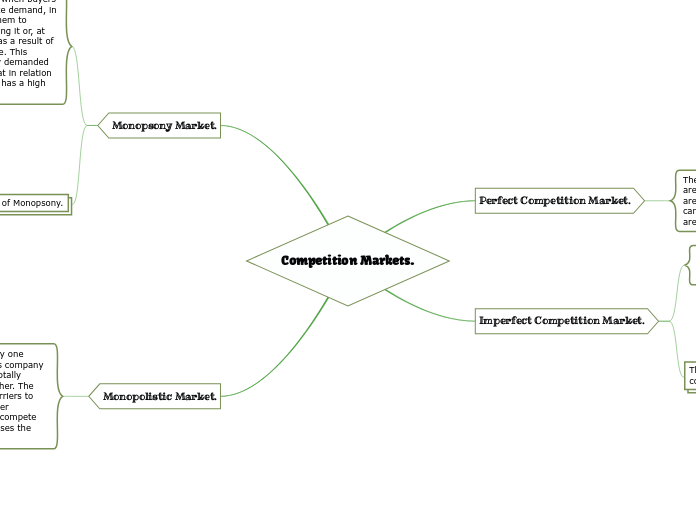Competition Markets.
Perfect Competition Market.
The goods and services offered for sale are all the same, and buyers and sellers are so numerous that no buyer or seller can influence the market price, so they are said to be price - takers.
Imperfect Competition Market.
It is one that operates between the two extremes: The Perfect Competition Market and the Monopoly Market.
There are two types of imperfectly competitive markets.
Monopolistic Competition Market. It is one where there are many companies that sell similar but not identical products.
Oligopoly Market. It is one where there are few sellers and many buyers. Oligopoly can be: Perfect when a few companies sell a homogeneous product. Y Imperfect: When a few companies sell heterogeneous products.
Monopsony Market.
This type of market occurs when buyers exert dominance to regulate demand, in such a way that it allows them to intervene in the price, setting it or, at least, getting it to change as a result of the decisions that are made. This happens when the quantity demanded by a single buyer is so great in relation to the total demand that it has a high bargaining power.
There are three kinds of Monopsony.
Duopsony: Occurs when two buyers exercise dominance to regulate demand.
Oligopsony: Occurs when buyers are so few that any one of them can influence the price.
Competition Monopsonist: It occurs when buyers are few and compete with each other by granting some favors to sellers, such as: production credits, technical, administrative or legal advice, advertising, gifts, etc.
Monopolistic Market.
It is one in which there is only one company in the industry. This company manufactures or markets a totally different product than any other. The root cause of monopoly is barriers to entry; that is to say, that other companies cannot enter and compete with the company that exercises the monopoly.
